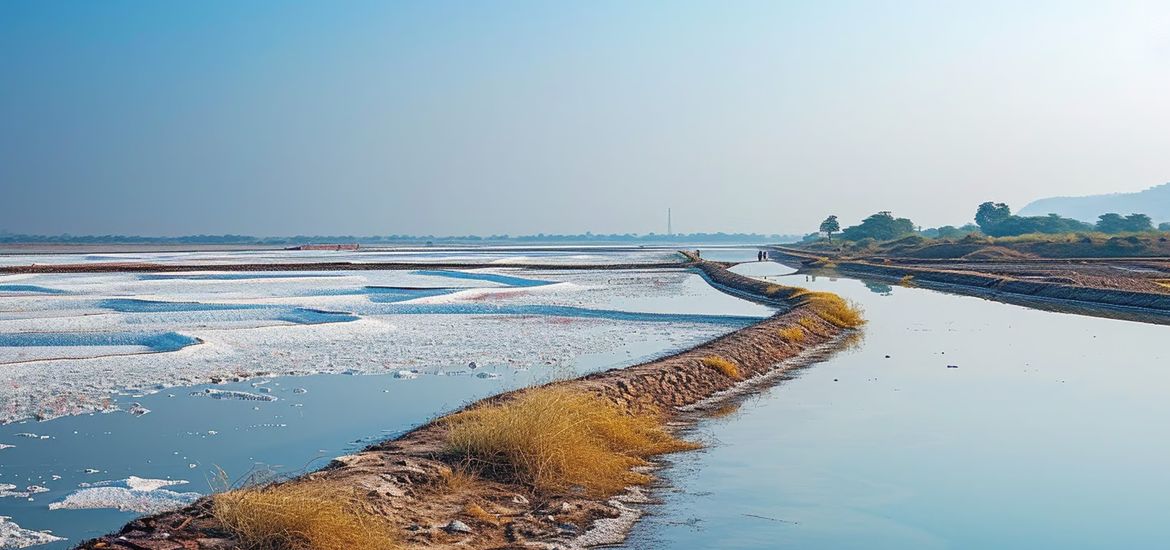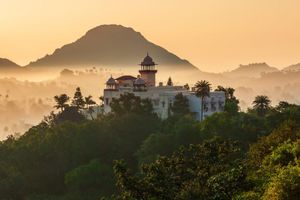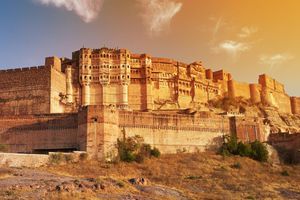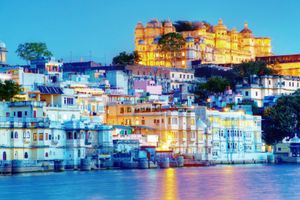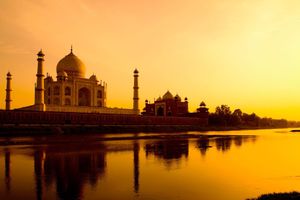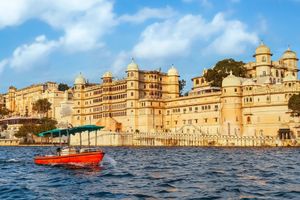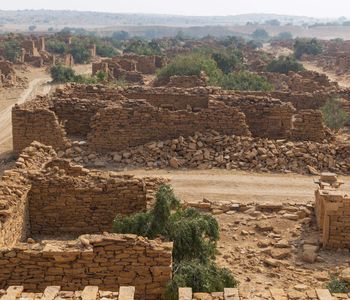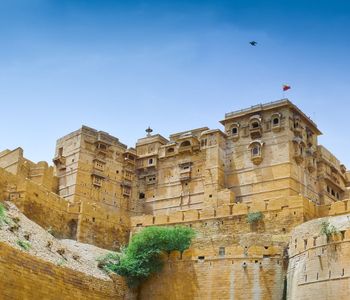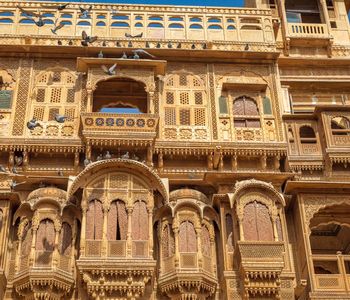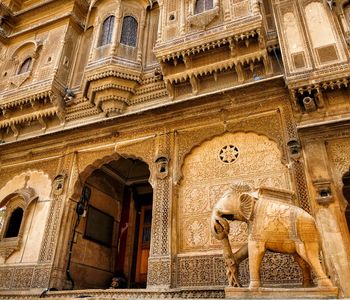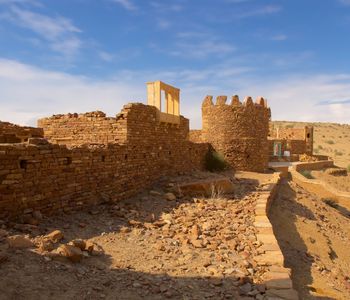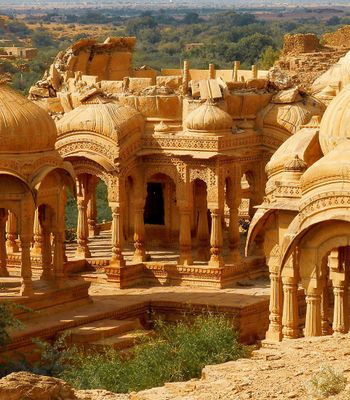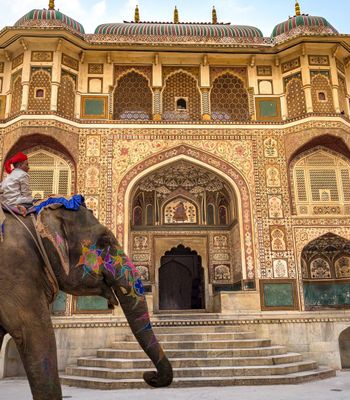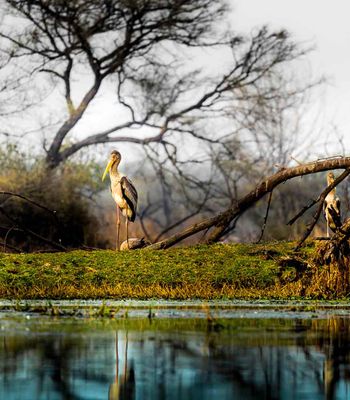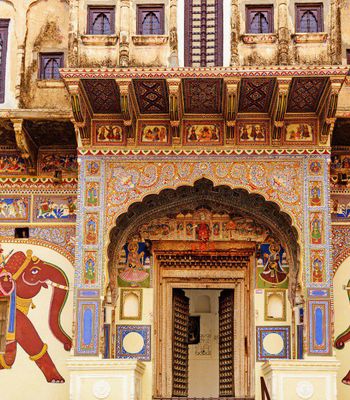Lost in the heart of Rajasthan’s arid expanse lies a shimmering enigma, Pachpadra Lake. At first glance, it looks like a mirage, but as you step closer, the vast white salt waves stretching over 25 sq. km reveal a reality just as surreal.
With a 98% sodium chloride concentration, this lake isn't just a geological wonder—it’s a lifeline of salt production, an untouched retreat, and a paradise for migratory birds. The glistening salt crystals, the eerie silence of the desert, and the golden hues at sunset make it a place that demands to be seen to be believed.
Historical Background: The Legacy of Salt
The origins of Pachpadra Lake date back to natural geological formations rather than royal commissions or artificial constructions. Historical accounts suggest that the lake’s high saline concentration was recognised as early as the medieval period, making it a valuable resource for local rulers and traders.
The area’s natural salt deposits attracted merchants and traders who transported salt across Rajasthan and beyond. During the reign of the Rajput rulers of Marwar, particularly the Rathore dynasty of Jodhpur, Pachpadra Lake emerged as a key centre for salt production and trade.
Salt, the "white gold" of its time, was an essential commodity for food preservation, trade, and medicinal uses. The Marwar rulers imposed levies on salt extraction, making it a significant source of revenue for the kingdom.
With the advent of British rule in India, the salt industry underwent central regulation and taxation. The British government imposed heavy salt production and trade duties, affecting local producers.
However, due to its natural reserves, Pachpadra continued to be a vital salt-producing hub. The lake's salt gained recognition for its purity and industrial applications, highlighting its relevance even during the colonial period.
Hidden Features of Pachpadra Lake
Nestled in the heart of Rajasthan’s arid landscape, Pachpadra Lake is more than just a saltwater reservoir—it is a mesmerising blend of nature, tradition, and cultural heritage. From its glistening salt plains to its rich biodiversity, the lake offers a unique and unforgettable experience for travellers seeking serenity and exploration.
The Majestic Salt Plains
Pachpadra Lake's vast salt deposits create a surreal landscape, with shimmering white expanses stretching as far as the eye can see. The high sodium chloride content (98%) makes the lake a breathtaking sight, especially under the golden glow of the Rajasthan sun.
Traditional Salt Extraction by the Khara Tribe
The indigenous Khara tribe has been practising age-old salt extraction techniques using the Moroli shrub. This sustainable and time-honoured method not only preserves the region's cultural heritage but also produces some of the purest salt in India.
A Paradise for Bird Watchers
The lake and its surroundings attract a variety of bird species, making it a haven for bird enthusiasts. Migratory and native birds gracefully glide over the water, adding to the lake's serene and picturesque charm.
A Photographer’s Dream
The lake’s shimmering salt flats, contrasting against the arid desert backdrop, offer a mesmerising visual treat. Sunrise and sunset paint the landscape in hues of gold and pink, providing stunning photography opportunities.
Lesser-Known Facts About Pachpadra Lake
Here are some lesser-known facts about Pachpadra Lake:
- Ancient Salt Production: Salt production at Pachpadra dates back centuries, with locals perfecting extraction techniques long before modern advancements.
- Healing Powers: The high sodium chloride content isn’t just for industry; locals believe the lake’s salt has healing properties for skin ailments.
- Traditional Refinement: The Indigenous Moroli shrub plays a key role in refining salt, a unique practice passed down through generations.
- Seasonal Colours: Depending on sunlight and season, the lake’s salt formations reflect hues of white, pink, and even light purple.
- Royal Legacy: During the rule of the Rajput kings, salt from Pachpadra was a prized commodity traded across Rajasthan and beyond.
- Biodiversity Hotspot: Flamingos and migratory birds flock to the lake, making it an unexpected biodiversity hotspot amid the desert.
- Underground Reserves: Beneath the surface, vast underground reserves ensure continuous salt production, keeping the lake’s significance intact.
- Sustaining Livelihoods: Even today, Pachpadra Lake is a lifeline for many local families, sustaining livelihoods through traditional salt farming.
- Sunset Dreamscape: The lake turns into a dreamscape during sunset, with salt crystals reflecting golden hues, offering a surreal visual treat.
When to Visit: The Best Time for Your Trip
The best time to visit Pachpadra Lake is from November to February when the weather is cool and pleasant. Summers get unbearably hot in Rajasthan, making it challenging to sit by the lake and enjoy the view.
For those who enjoy exploring under more temperate conditions, winter is your best bet. Plus, this period coincides with Rajasthan's festivals, providing an opportunity to experience local culture alongside your visit to the lake.
Getting There: Your Travel Guide to Pachpadra Lake
Reaching Pachpadra Lake is easy, with multiple travel options available—by air, road, or train. Here’s a quick guide:
By Air
The nearest airport is Jodhpur Airport (JDH), around 303 km away. While this airport serves both domestic and limited international flights, visitors can easily hire a taxi or take a bus from the airport to reach the lake. This offers a comfortable entry point, especially for those coming from major cities.
By Train
The closest railway station is Jaisalmer Junction (JSM), just 35 km from the lake. It is well-connected to major cities like Jodhpur, Jaipur, and Delhi. From there, local transport options like cabs and buses can take you to the lake.
By Road
Pachpadra is well-linked by road. You can drive or take a bus from cities like Jodhpur (309 km), Barmer (193 km), or Jaisalmer (37 km). Rajasthan State Transport and private buses frequently run on this route.
As the sun dips below the horizon, Pachpadra Lake transforms—salt crystals catch the fading light, casting an otherworldly glow across the desert. It’s more than just a salt lake; it’s a hidden masterpiece of nature where history, culture, and raw beauty merge. Whether you come for the rare bird sightings or the timeless tradition of salt extraction, one thing is sure, Pachpadra leaves its mark.
